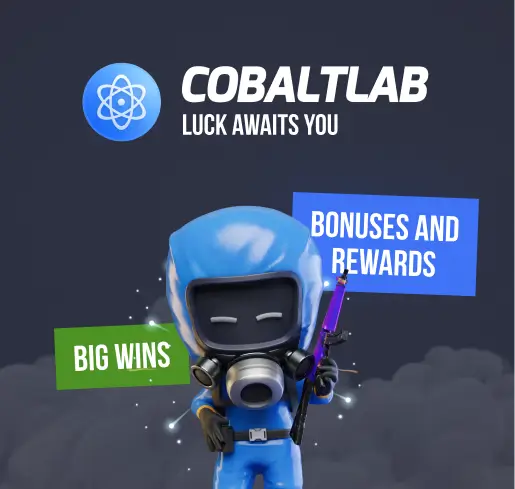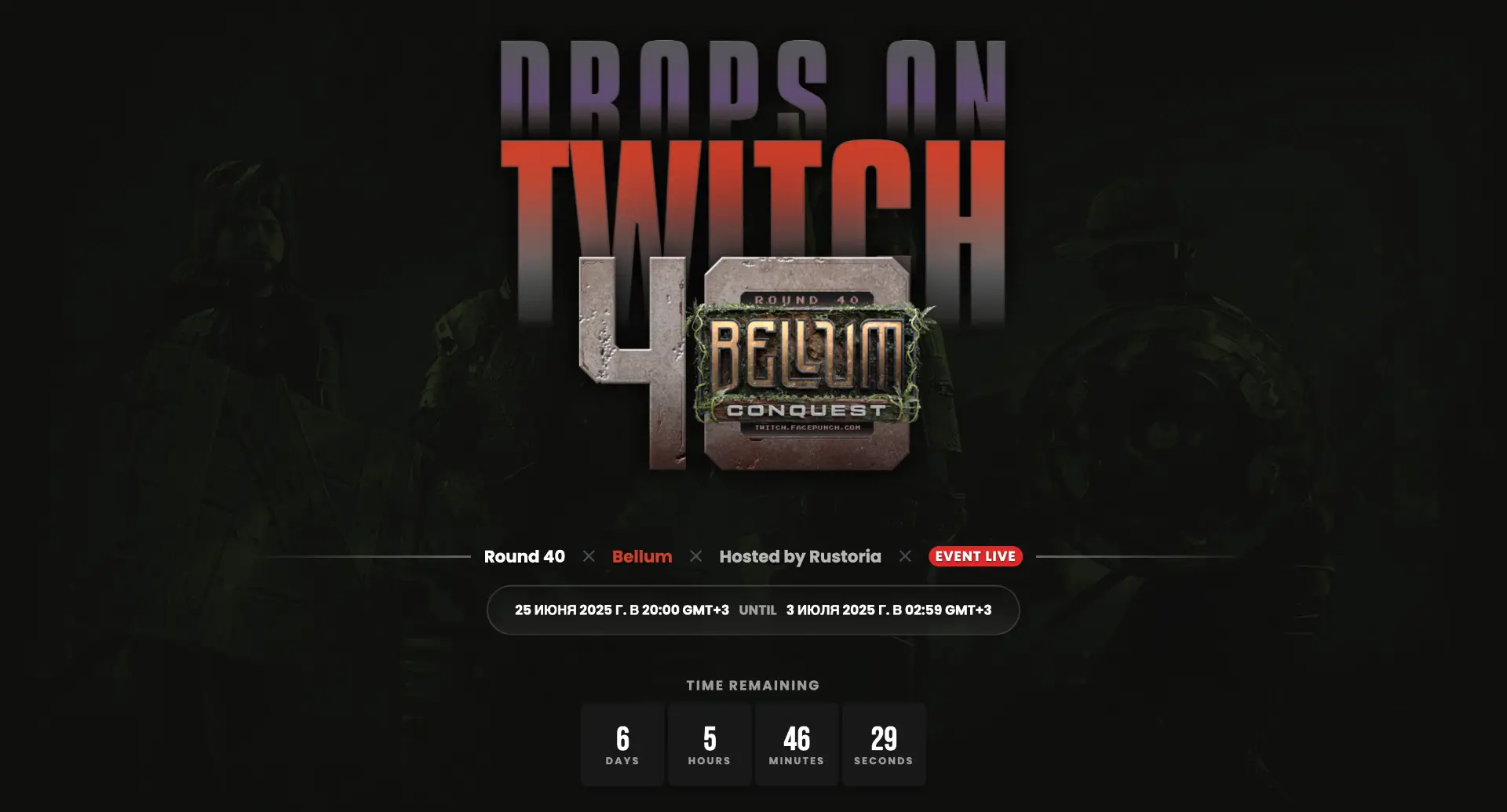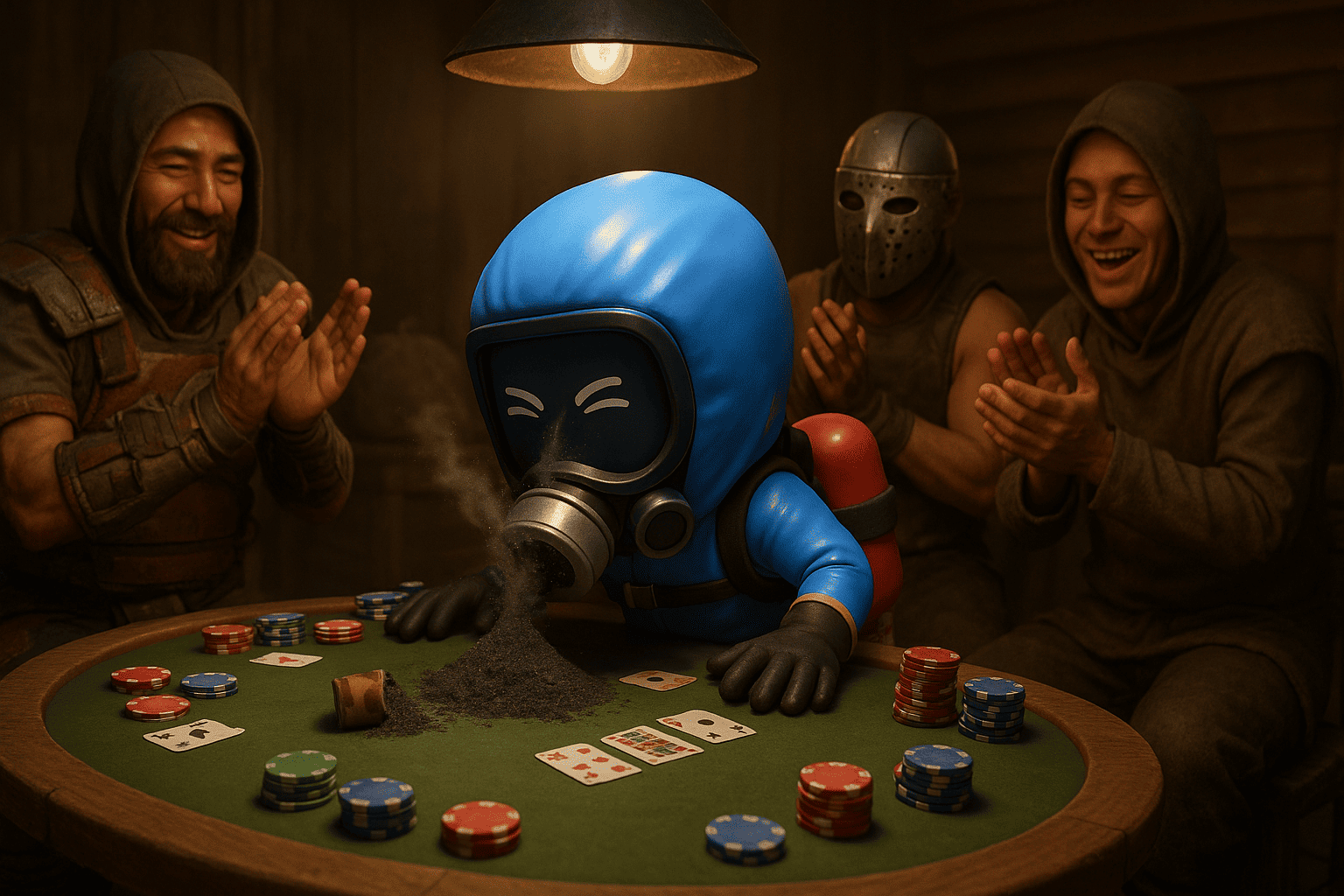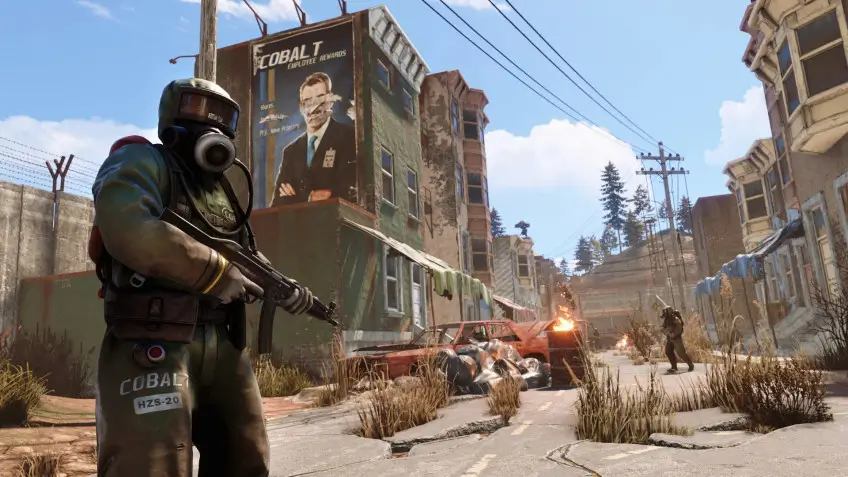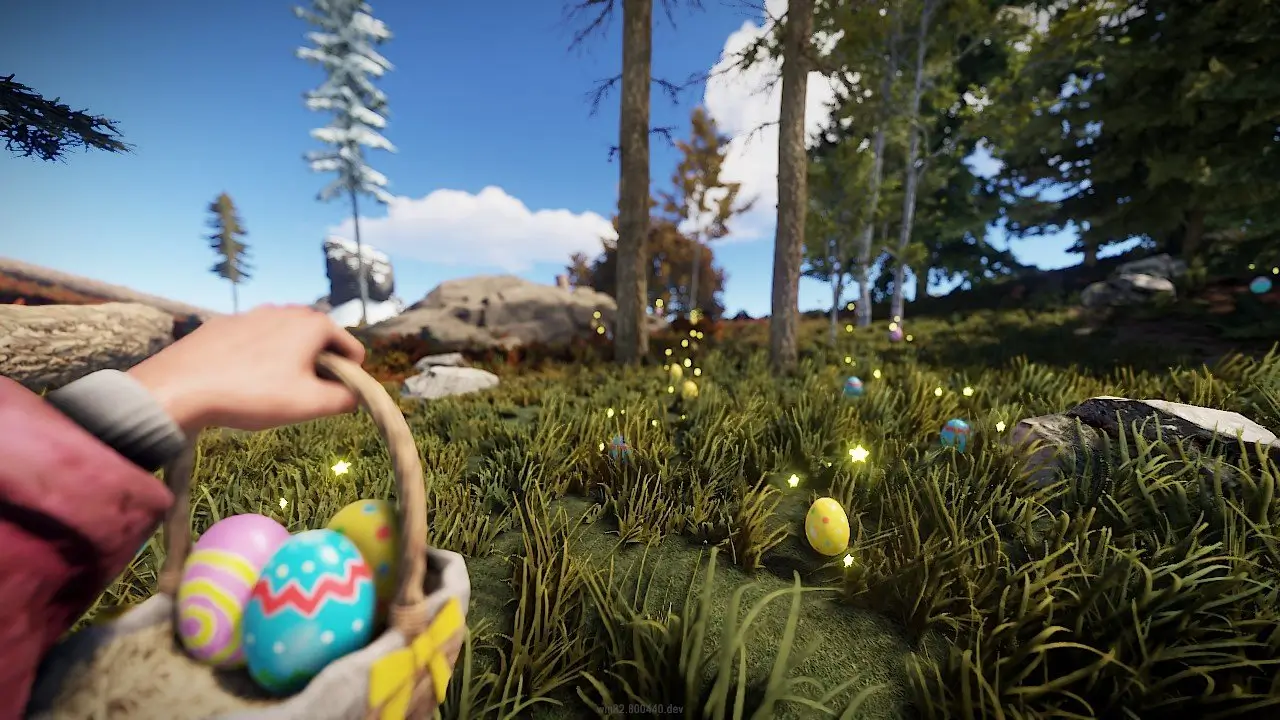The Myth of Impossible Solo Play
Among Rust players, there’s a long-standing belief that surviving alone in Rust is nearly impossible — clans dominate servers and crush everything in their path. Yes, the life of a “lone wolf” is brutally difficult, but it can also be incredibly rewarding. Experienced solo players prove that even against overwhelming numbers, clever tactics and patience can keep you alive for a long time.
The key is to abandon the myths and understand that success isn’t measured by the number of won gunfights, but by the ability to recover after losses and keep going. You will inevitably die; your base will be raided — maybe several times — but what matters is not giving up and starting over.
Changes in 2025: What’s Easier and What’s Harder
Rust keeps evolving. The good news for solo players — there are now more Solo/Duo/Trio servers with team-size limits, and Hardcore settings where smaller groups and lone survivors can thrive.
The downside — clans have become even more organized: coordinated voice comms, automation, planned defenses, and timed raids. The challenge hasn’t disappeared, but with patience, cunning, and knowledge of game mechanics, solo players can still last through an entire wipe.
What “Survival” Means for a Solo Player
Survival doesn’t mean “owning the server.” For a solo player, it means building a hidden base, gathering resources, and living until the next wipe — while actually enjoying the process.
Solo players often avoid direct fights and play “dirty”: they ambush, pick their battles, retreat when the odds are bad, and strike later on their own terms. Every defeat is a lesson, and every wipe is a fresh opportunity.
Choosing the Right Server
Solo/Duo/Trio vs Vanilla
On servers with team size limits, the risk of “zerg rushes” is lower, the atmosphere is more balanced, and fights tend to be fairer. Vanilla is pure Rust — freedom, chaos, and danger. Sometimes clans fight each other there and ignore smaller “rat holes,” giving solos a chance to hide and live quietly “in the background.” Still, high-pop vanilla servers demand solid PvP skills.
Population sweet spot
Too crowded (200+) — the map is covered in bases and competition is brutal. Too empty — boring, no practice. The ideal range for solo beginners is around 20–50 players online: enough interaction, but still room to maneuver. As your experience grows, you can move to higher pop servers.
When to Join
The best time to join is right after a wipe. The first day (even the first hour) levels the playing field — your chances to build, hide, and fortify are much higher. Joining late (3–7 days in) often means facing AK-wielding clans and massive fortresses.
Also, consider time zones — it’s easier to play when the server’s active hours match your own.
Tip: If you want to feel the thrill of a fresh wipe without the pain and toxic raids, try the modes on Cobalt Lab.
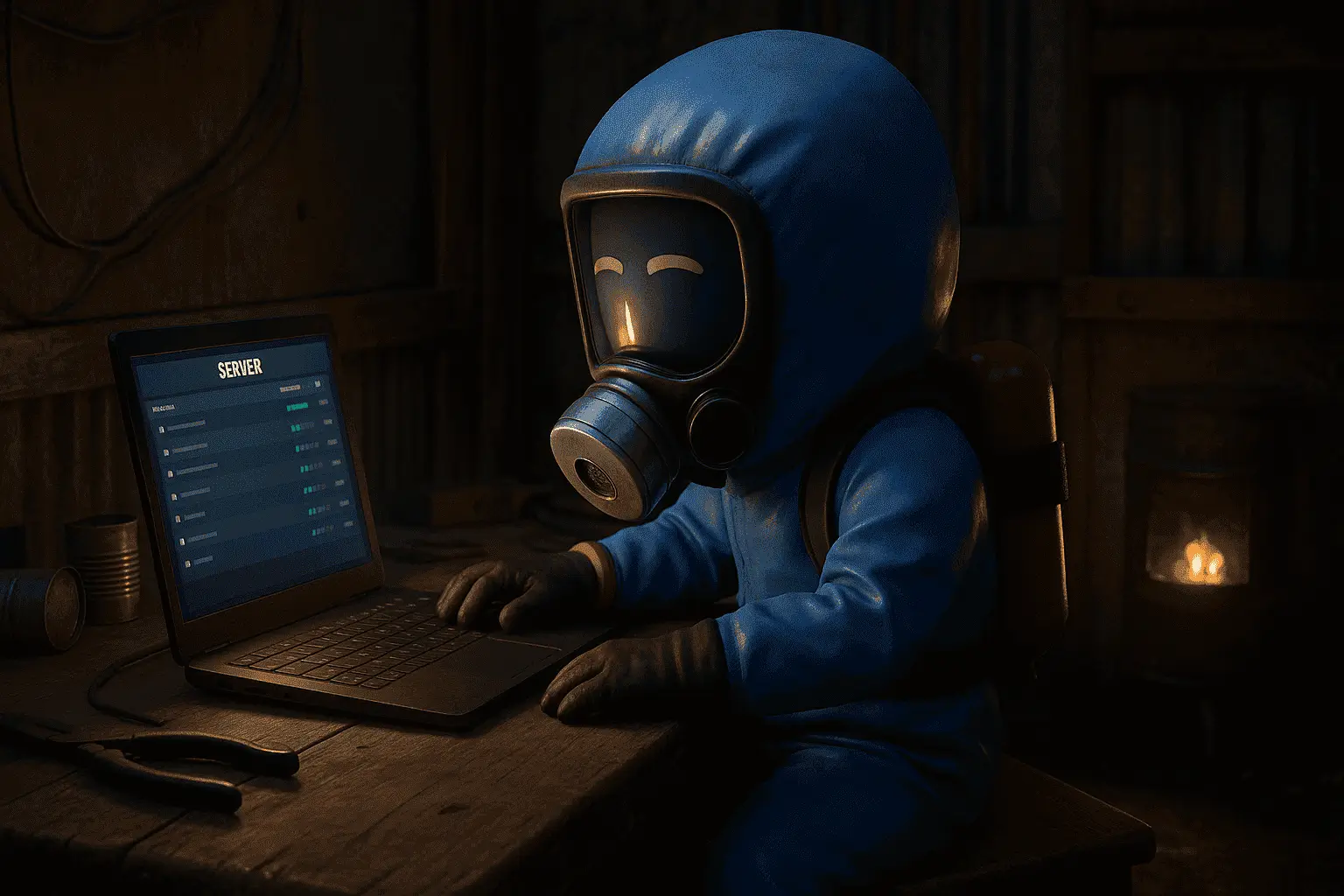
The Philosophy of a Solo Base
Locations That Clans Ignore
- Clans love monuments and resource-rich areas.
- A solo player seeks silence — snow biomes, swamps, far outskirts, rocky ridges, and small islands.
- Hide your base behind terrain: dense forests, mountain shadows, or the backside of cliffs. The worse the location seems for living — the better it is for survival.
Micro Bases, Bunkers, and Burrows
The smaller, the better. The ideal setup is a 2×1 or triangle base with a bunker element — one entrance, two doors, Tool Cupboard deep inside, furnaces recessed, and loot split across levels.
Small bases are easier to hide and cheaper to reinforce. A bunker lets you “seal” your loot room for the night. Burrows or cave bases work perfectly as invisible hideouts.
Camouflage and Chameleon Skins
- Use wooden doors, camouflage nets or rugs, and signs that make your base look abandoned.
- No lights on the roof, minimal smoke or campfires — keep all production indoors.
- Add decoy structures, like an empty shack with a wooden door — it saves you from wasting other players’ explosives.
Multi Base Strategy
- Don’t put everything in one box. Maintain 2–3 bases: a main base, a backup, and a hidden stash.
- Spread your resources across the map — some explosives and weapons in a one-room hut in the wild, materials at home.
- Use safe zones (Outpost/Bandit Camp) for trading and partial storage. Diversification turns you from an “easy target” into a problem that’s hard to wipe out completely.
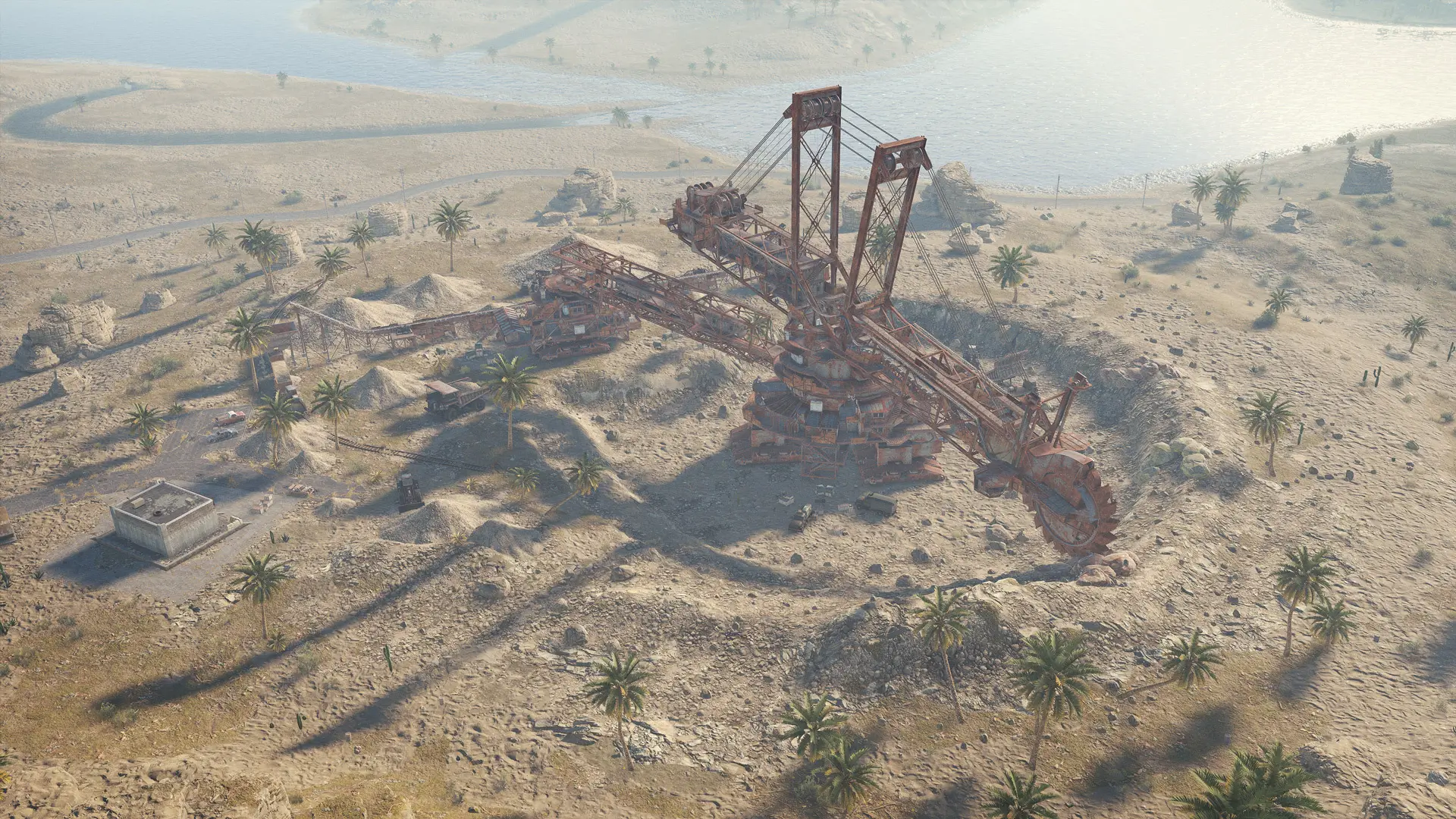
Solo Player Progression Priorities
The First 30 Minutes — Critical:
- Cloth → Sleeping Bag (no respawn = no game).
- 2×1 base, door, Tool Cupboard (TC), at least a wooden lock → upgrade to a code lock ASAP.
- Furnace: animal fat + cloth → low-grade fuel; smelt metal and craft code locks.
- Bow and arrows — for hunting and defense, plus bandages and simple clothing.
- Gather scrap for Workbench T1: barrels, crates, and roadside farming — your first goal is a quick workbench.
Crafting Priorities:
- Shotgun or double barrel for close combat + basic traps.
- Code locks on everything: doors, TC, and external boxes.
- Healing items: bandages, med syringes, small medkits.
- Metal tools for faster resource gathering (accelerate your progress).
- As you advance — T2/T3, alarms, and solar-powered turrets.
Essence: your goal isn’t to build a palace — just a small, solid base that you continuously upgrade.
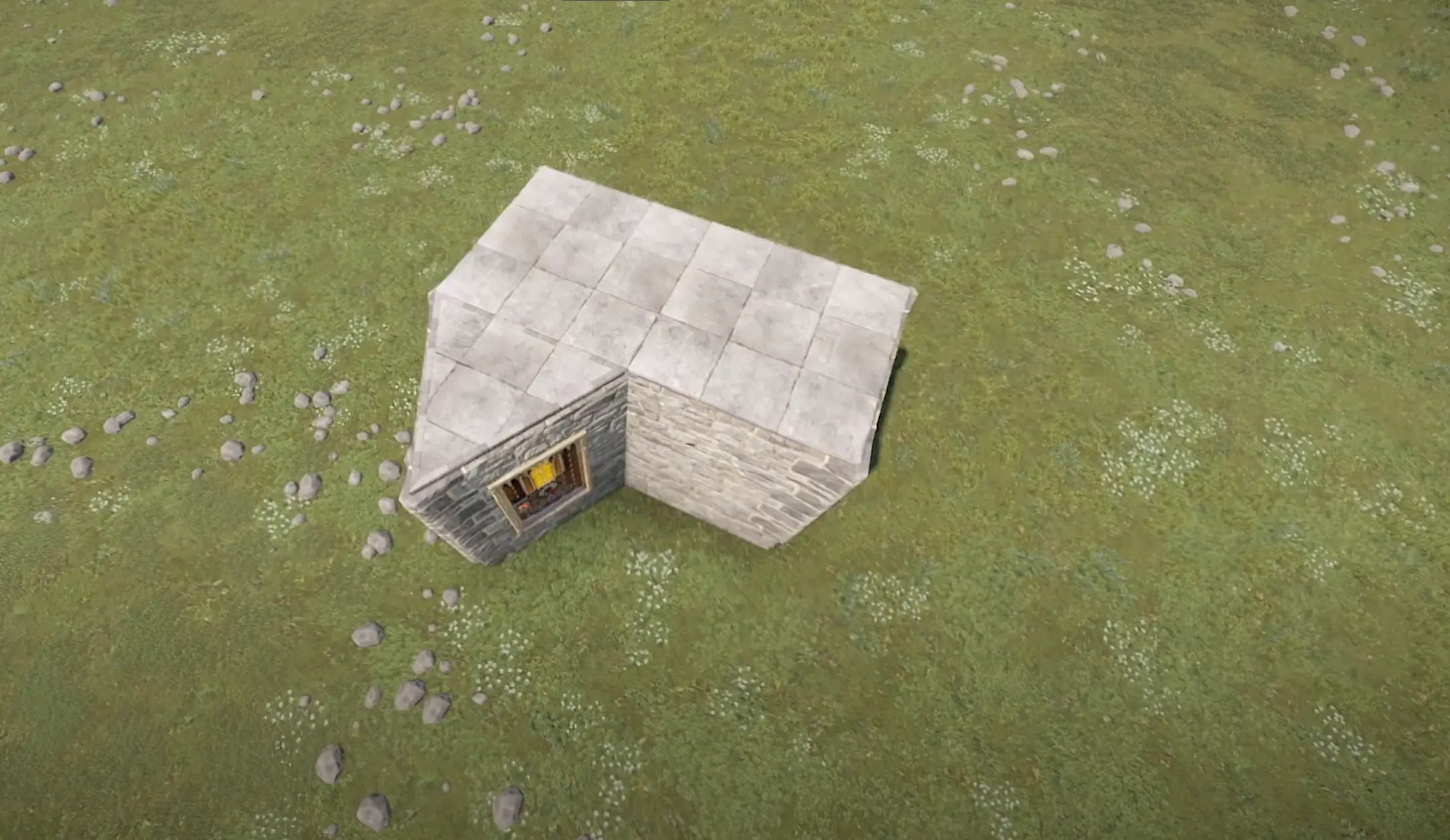
PvP Tactics Against Groups
When to Fight and When to Run
The solo golden rule: fight only when you have an advantage (positioning, surprise, or superior intel/gear).
- See a clan brawl? Hang back and clean up the leftovers.
- Spot a lone player diving into a house? A quick door-camp for a few minutes can pay off.
- Hear a big event nearby? Fade to the shadows — don’t be the first target.
Traps, Turrets, and Minefields
- Place bear traps in tall grass near entrances and paths.
- Bury mines under debris or inside structures: if an enemy “rolls into” your loot room, they’ll pay for it.
- Shotgun trap above the doorway — classic “welcome” setup.
- Even a single turret (powered by a solar panel/battery) on a corner or second floor can be a game-changer.
Combine Tactics: lure foes into a choke point → close the door → let traps/turret do their work.
Taking out two or three attackers this way is often enough to make a clan rethink pushing your base.
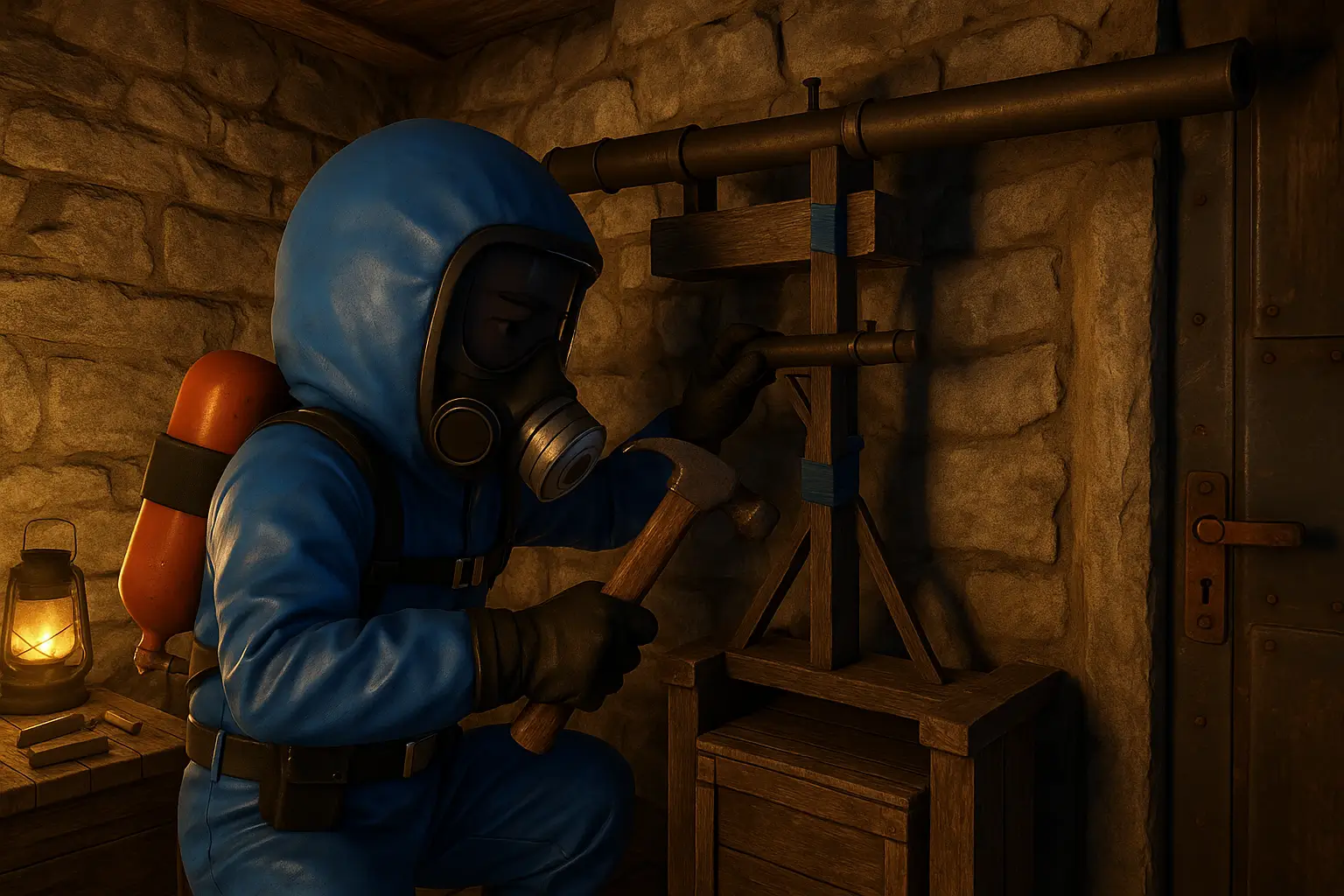
Economy and Loot Management
Where to Store Valuables
Hidden stashes and backups are essential.
- Bury Small Stashes (check them occasionally so they don’t decay).
- Secret boxes above ceilings or doorframes.
- Keep some resources inside furnaces — raiders rarely check there.
Split your loot across multiple containers — it’s harder for raiders to take everything.
Keep an anonymous reserve in safe zones like Outpost or Bandit Camp.
Barter and Trade
- Solo/duo players often trade: metal ↔ sulfur, components ↔ weapons.
- Do deals at Outpost — drone trading means zero risk.
- Sell resources to clans through vending machines: while they fight, you profit in scrap.
- Temporary alliances for Oil Rig runs or events can work too — just don’t let anyone inside your base unless you truly trust them.
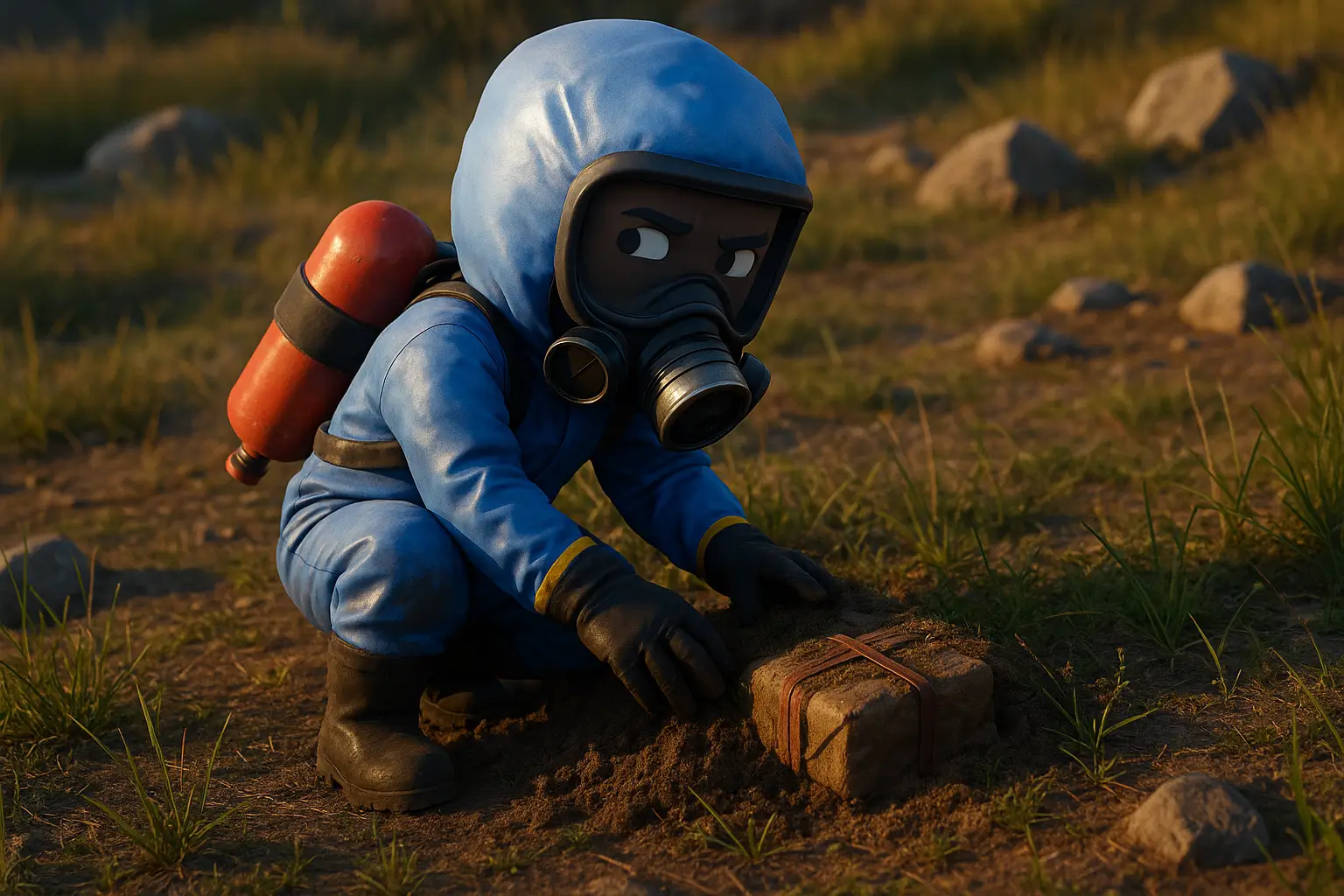
Summary
Playing solo vs clans is the hardest path in Rust — but it’s absolutely possible.
The recipe for survival: the right server (team limits, moderate population, fresh wipe), a small hidden base, split resources, steady upgrades (bow → shotgun → metal walls → turret), and a cool head in PvP.
Fight on your own terms — use ambushes, traps, and retreat tactics. Trade when it’s profitable, and remember: every new wipe is a new chance. Don’t believe the myth that solo survival is “impossible” — a patient and skilled lone wolf can outlast even organized clans.
🎮 Try these strategies in action — join Cobalt Lab. Test your survivor instincts, refine your tactics, and earn bonuses for your activity.
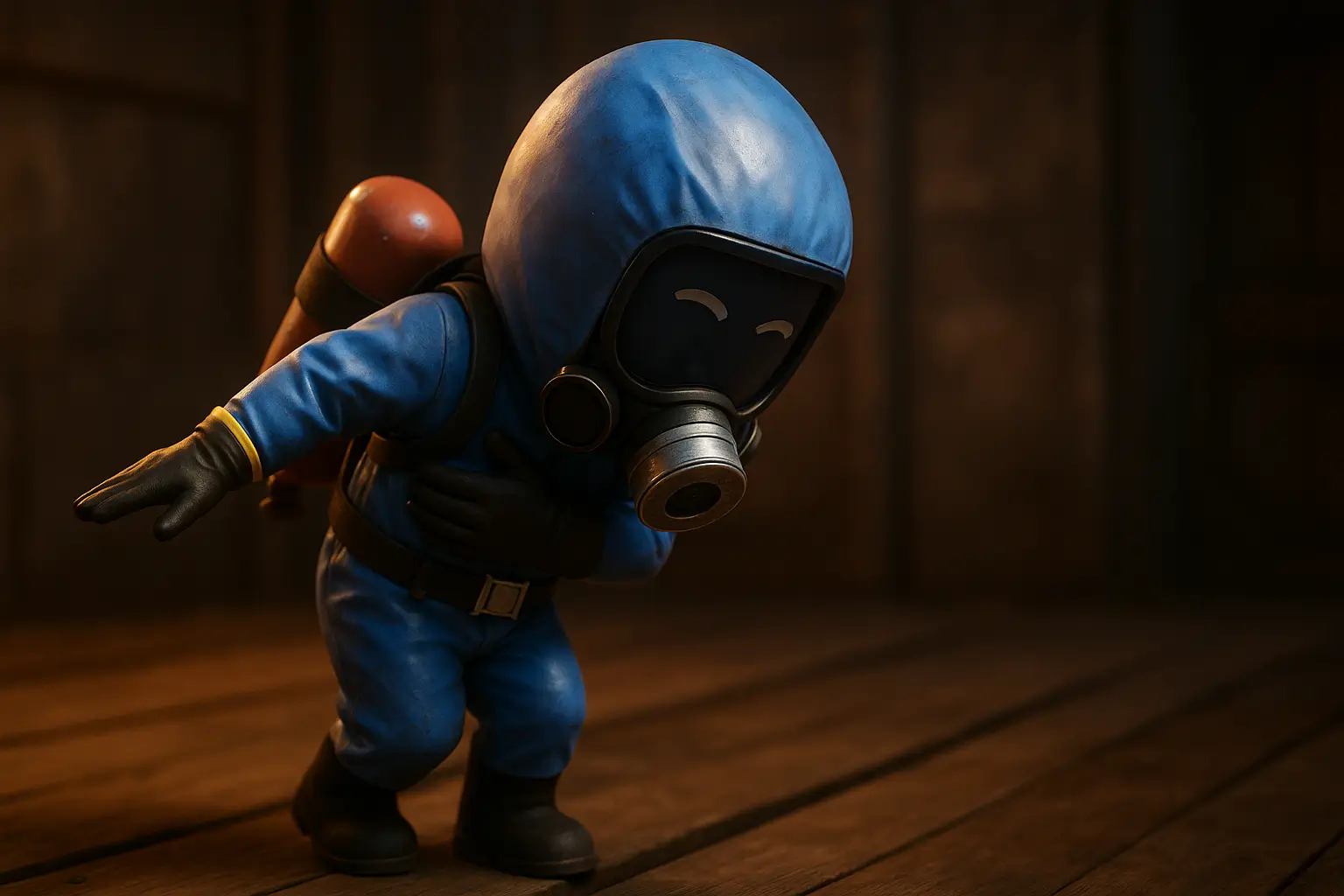
💡It will be interesting as well:
